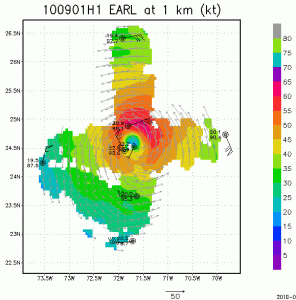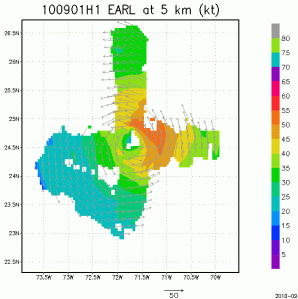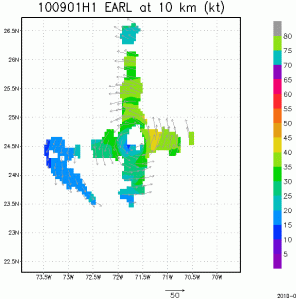As Earl undergoes major track, but minor intensity changes as it passes just east of the Bahamas NOAA P-3 missions continue to collect airborne Doppler radar data to use in initializing and evaluating model guidance. Included here you will see images of the horizontal winds within the inner core of Hurricane Earl sampled from the tail Doppler radar on the P-3 early on 1 September 2010. Wind, temperature and relative humidity from GPS dropsondes dropped from the P-3 are also visible at 1 km altitude. These images are at three altitudes, 1km, 5km, and 10km, using a composite of winds from two legs oriented east-west and south-north. Note the strongest winds on the north-northeast side of the storm at 1 km altitude, rotating clockwise in azimuth with increasing altitude until it is east of the center at 10 km. This clockwise rotation of the wind maximum with increasing altitude is very different to that in the analyses from the first four P-3 missions, suggesting that Earl is encountering vertical shear of the horizontal wind over the vortex from a different direction than earlier. The change in vertical shear of the horizontal wind, related to the change in storm track, likely reflects the increasing westerlies impacting the storm as it moves north. Other changes evident are a much broader wind maximum and an increase in the radius of the maximum wind over that in the past analyses, also indicative of changes in the storm structure as it moves more northward.
Published on: September 1, 2010


